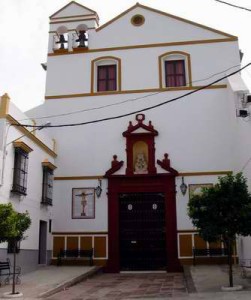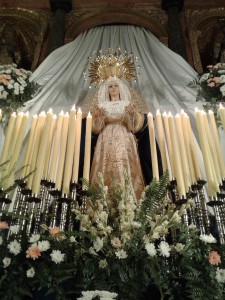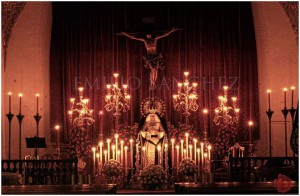The former convent and church of the Holy Trinity is located east of the town of La Rambla. Its construction started in 1527, the year the religious community called Trinitarians took care of an old church.
El Convento went on to become one of the most important of this Order in Andalusia.
when trinitarians in 1835 had gone takes over of the Church and ‘’La hermandad de Stmo Cristo de la Expiración y Mª Stma de los Dolores”
Later, the Trinitarios brotherhood returned to the convent, the diocese of Córdoba granted them the Church and the corresponding property, until 1960 when they definitely left.
The remarkable artistic and architectural values of the two nave that have been kept from the old Convent stand out in the building. The structural and decorative elements of the central nave follow a Renaissance classicism, with certain alterations that belong to Baroque Mannerist style of the late sixteenth and early seventeenth centuries. The same simplicity applies to the style of the façade, made of stone and now painted in red colour.
The Façade: Second half of 17th century. Made of marble, predominantly red colour.
The Temple: It presents several interventions in the 17th, 18th and 19th centuries. It has a central nave and a smaller one, on the side of the sanctuary, in which there are several chapels. It has five sections with vaults and at the end of Capilla del Sagrario with an oval dome, it erects a large altarpiece of the late Baroque. It is interesting to highlight the chapel devoted to Cristo de la Expiracion, located in the center, with a beautiful oval niche with columns and covered by a neoclassical dome of the 18th century.
In the apse of the central nave a marble altarpiece is raised, in black and red colour from the sixteenth century or early seventeenth century. At present niches to house pictures, what was initially made for paintings

Easter
We can find two brotherhoods, Cofradía de Jesús en su entrada triunfal en Jerusalén and María Stma. del Rosario, and the brotherhood of Santísimo Cristo de la Expiración y María Santísima de los Dolores, which are taken out on procession on Palm Sunday and Good Friday respectively.
PALM SUNDAY: Founded in 1970, within the brotherhood of the Expiration. At first only the famous ” Borriquita ” was taken out until in 1978 a Virgin was found in one of the vaults of the convent belonging to the the late sixteenth century and early seventeenth which had been hidden by the Trinitarians who had been there previously and had been placed in the center of the altar.
The passage of the mystery comes from the workshops of Christian Art Olot (Girona) and the Virgen del Rosario is of unknown author.
As a curiosity: This is the brotherhood in which the children of the town go out on procession. Virgen del Rosario is said to be very miraculous, as a matter of fact one miracle has been recognized by the church.

GOOD FRIDAY (NIGHT): Founded in 1719. It began as a brotherhood devoted to pray the Rosary. In the late eighteenth century it turned into a brotherhood of penance and puts the Virgin of Sorrows as its most important image. In 1970 they moved the Virgin and the Christ to the parish of the Assumption as El Convento was in ruins, which were restored and images were brought back to their temple in 1996.
The Cristo de la Expiración is an anonymous work of the seventeenth century attributed to the circle of Juan de Mesa and has been restored several times and the Virgen de los Dolores is also of an unknown author of the XVII century and has been restored several times too.
As a curiosity: The bearers of Our Lady of Sorrows, was the first brotherhood of bearers with rules of Andalusia and several stories about some of the miracles performed by the Holy Christ of the Expiration are also known.

Sources consulted:
Esta entrada también está disponible en: Spanish

 English
English Español
Español